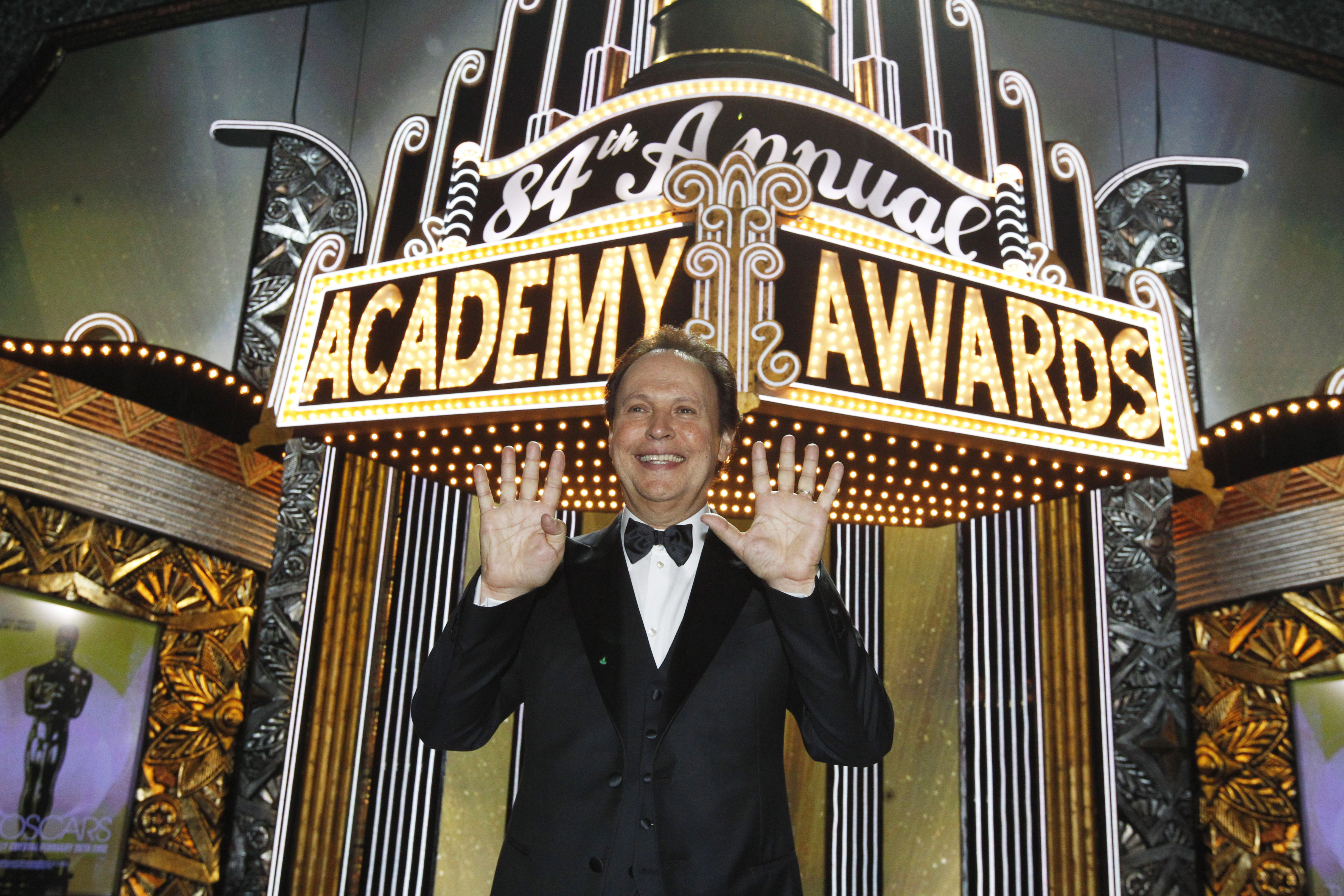Analysis: Fears grow that Oscar's allure may be resistible
Tuesday, February 28, 2012
By BROOKS BARNES and MICHAEL CIEPLY
LOS ANGELES - The Oscar statuette stands 13 1/2 inches tall and weighs 8 1/2 pounds.
They may want to think about shrinking it.
The Academy Awards ceremony, after all, appears to be evolving toward a materially scaled-down event. And with early Nielsen ratings for Sunday's telecast essentially flat - up a bit in total viewers but static among the bull's-eye audience of viewers 18-49 - Hollywood started coming to grips with one of its biggest worries: Is this the new normal for the Oscars? A diminished attraction that ranks dramatically behind the Super Bowl and a slew of playoff games, and has even been eclipsed by a surging, better-suited-to-the-social-media-age Grammys?
ABC estimated that this year's Academy Awards broadcast, with two sparsely seen movies, "The Artist" and "The Iron Lady," sweeping the top categories, drew about 39.3 million viewers, up 3.7 percent from last year. That is about 13 percent of the U.S. population. Among adults 18-49, viewership was flat at 14.9 million people.
"I think that's become the normal," Tom Sherak, the president of the Academy of Motion Picture Arts and Sciences, said of the more modest audience for the Oscars. Sherak noted that the ceremony faced competition on Sunday from TNT's presentation of the NBA All-Star game.
By comparison, the Super Bowl drew more than 113 million viewers early this month, up 33 percent from its average in the 1990s. A playoff game in January drew about 58 million viewers. The Grammy Awards attracted nearly 40 million people this year, powered by interest in how the program would memorialize Whitney Houston but also by efforts to turn that show into more of a live concert and less of an envelope-opening ceremony.
ABC characterized this year's Oscar ratings as "surging year to year" and noted that the online audience for the event "experienced tremendous year-over-year growth." Ratings information for the vast overseas audience for the telecast will trickle in over the coming days.
In the 1990s and shortly afterward, when populist movies like "Forrest Gump" and "Gladiator" won top prizes, the Oscars telecast routinely delivered about 45 million total viewers. The high point came in 1998, when the telecast delivered a peak audience of around 57.3 million viewers.
But the flat ratings among younger viewers for this year's Oscars, which came despite scrambling by the Academy to deliver an uptick, adds fuel to the widely held belief that Hollywood's awards machinery is broken. Indeed, the movie capital awakened Monday to the realization that for yet another year it had delivered a five-month buildup to a one-night letdown.
Billy Crystal, who hosted the Oscars, suffered withering reviews for a routine that was long on pep but struck critics as antiquated.
"Oscars Become Badly Paced Bore-fest" read the headline in the Hollywood Reporter. Writing in The New York Times, Alessandra Stanley likened the show to "an AARP pep rally." In The Washington Post, Hank Stuever wrote of the ceremony: "Early on, it hit the rocks and started to list. Almost everyone drowned."
The smaller Oscars is epitomized by its biggest player, the tiny but effective Weinstein Co., which powered "The Artist" to five trophies Sunday, including best picture, and "The Iron Lady" to two, including best actress for Meryl Streep. Harvey Weinstein, whose company also won best picture last year with "The King's Speech," aggressively campaigned for the films, trotting Uggie, the dog from "The Artist," to events and insisting in radio ads that Streep deserved an Oscar in part because she hadn't won one since 1983.
Neither "The Artist" nor "The Iron Lady" has struck a nerve at the North American box office, with each so far luring about 4 million people to theaters. That is as if all the people living in Los Angeles had gone to see the filmsbut the rest of the country did something else.
With films that most of America hasn't seen continuing to dominate the Oscars - "Hugo," a winner of five trophies Sunday, has been a box-office dud - the Academy seems to have effectively eliminated one of the crucial measuring sticks of the past: the ability of a picture to move the masses to buy tickets. Put another way the Academy, whose membership is smaller and artier than in decades past, does not seem as responsive to audience pressure as it does to campaign wizardry.
Sherak acknowledged that the Academy's membership process has produced an older group with more esoteric tastes. Those older members, the thinking goes, are choosing movies that play to an audience that doesn't spend much time in theaters, where the big movies make their mark. "We're all living longer, so we're an older organization," said Sherak. "If you're healthy, 67 is the new 55."
Sherak will not be running for a fourth term as the Academy's president; his position on its governing board, a prerequisite to the presidency, has come up against a term limit. Later this year, then, a new president will have to confront the equation that has produced a smaller Oscar enterprise.
While there has been much talk in the past of restoring energy to the Oscars by compressing the months-long lead up, any such adjustment appears likely to involve relatively minor tweaks: moving the awards up by a week, for instance, or by announcing the nominations earlier.
The big questions, in fact, will have to be answered by the Oscar voters, who will decide whether the bent toward smaller films is a permanent thing. But, cautioned Sherak, "As soon as you say that, a 'Titanic' or a 'Lord of the Rings' or an 'Avatar' comes along."
